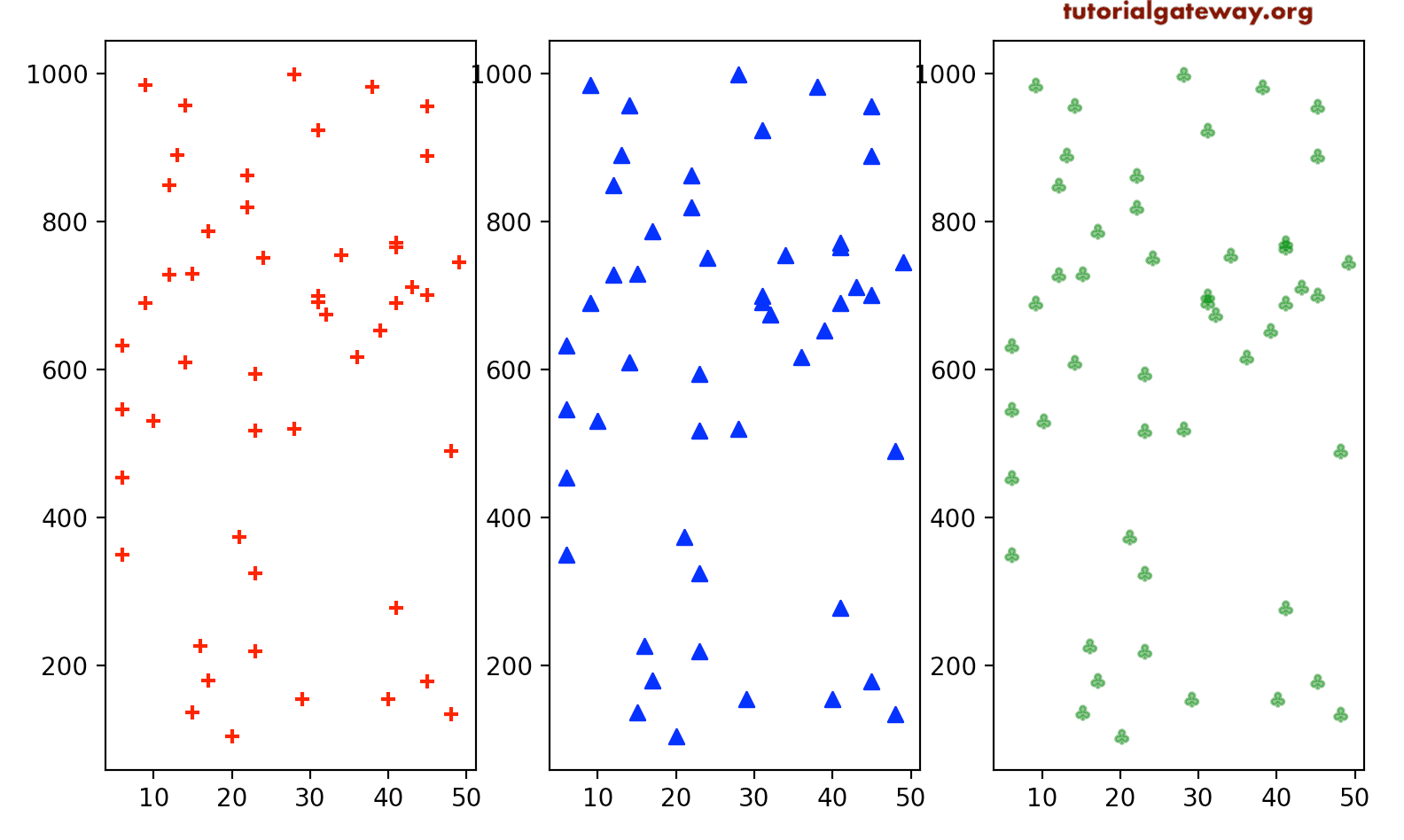

Here is my code: import matplotlib import matplotlib.pyplot as plt import pandas as panda import numpy as np def PCAscatter (filename): ('ggplot') data panda.readcsv (filename. The required positional arguments supplied to ax.scatter() are two. I'm currently working with Pandas and matplotlib to perform some data visualization and I want to add a line of best fit to my scatter plot. If you found this article useful, you might be interested in the book NumPy Recipes or other books by the same author. Matplotlib provides a function named scatter which allows creating fully-customizable scatter plots in Python. Scatter plots of (x,y) point pairs are created with Matplotlibs ax.scatter() method. We can then calculate the sum of the squares of the distances: For example: mydata df.dropna (how'any', subset 'col1', 'col2') myscatter scatter (mydata 'col1', 'col2', s1) Plot in red, with smaller size, all the points that have a col2 value greater than 0.5 myscatter.replot (mydata 'col2' > 0.5, color'red', s0. I ran a test of the whole Matplotlib module entirely on a different file. This is obviously not the scatter plot I'm trying to get, and it's worth noting that the only thing that changes when I use the plt.scatter() command is that the points on the plot just get very large.

It will be an approximation because the points are scattered around so there is no straight line that exactly represents the data.Ī common way to find a straight line that fits some scatter data is the least squares method.įor a given set of points (xn, yn) and a line L, for each point you calculate the distance, dn, between the point and the line, like this: Matplotlib Scatter Plot - scatter() Function This plot is mainly used to observe the relationship between the two variables. While running this code, the following graph is produced.

When we fit a straight line, we try to find a line that best represents the data. The data uses UK shoe sizes, other countries use a totally different system with very different numbers. (x, y, sNone, cNone, markerNone, cmapNone, normNone, vminNone, vmaxNone, alphaNone, linewidthsNone,, edgecolorsNone, plotnonfiniteFalse, dataNone, kwargs) source. So in the example data, the first person has height 182 cm and shoe size 8.5, the next person has height 171 cm and shoe size 7, and so on. A marker style with no line style doesn't plot lines, showing just the markers.Įach (x, y) pair of values corresponds to the height and shoe size of one person in the study. The key thing here is that the fmt string declares a style 'bo' that indicates the colour blue and a round marker, but it doesn't specify a line style. We are using the plot function to create the scatter plot. Import matplotlib.pyplot as plt height = shoe = plt.


 0 kommentar(er)
0 kommentar(er)
